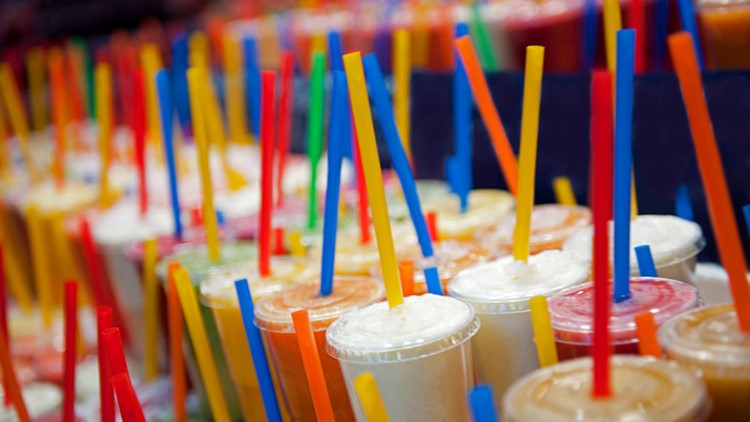Seattle’s city-wide plastic utensil ban went into effect this weekend.
Starting July 1, businesses will no longer be able to provide traditional, petroleum-based, plastic utensils or straws. But are the alternatives as green as they claim to be?
It’s estimated that less than 10 percent of plastic ever created has been recycled; 80 percent remains in landfills or the natural environment. In the United States alone, 175–500 million plastic straws are used each day.
All of these straws only make up half a percent of plastic waste, weight-wise, but environmental activists call straws a “gateway plastic.” They hope that taking away straws is a small change that will spark consumers to be more mindful in their choices.
When discarded, plastic straws break into small pieces and can leach harmful chemicals into the soil and water. Many purportedly eco-friendly straw alternatives have found their way into the market. But which ones are actually eco-friendly and which ones are just pretenders?
There are two disposable alternatives to the single-use straw: paper or bioplastic.
Bioplastic is a label that can be misleading to consumers. While the name suggests an environmentally-friendly product, not all bioplastics are as green as they seem.
A bioplastic is a plastic that is derived, at least in part, from biomass such as vegetable oils or plant matter. Plastics are polymers, meaning that they are materials that are made up of many smaller, repeated molecules, called monomers. This structure gives polymers many of their unique characteristics, one of which is that they tend to be hard to break down.
Bioplastics can be divided into two groups: bio-based plastics and bio-polymers. While the terms sound interchangeable, there are important differences in how they’re produced that affect their ability to break down. Bio-based plastics are made up of monomers that come from biomass. These molecules are polymerized, or turned into plastics, in a similar way that petroleum-based monomers are. The resulting plastics are virtually indistinguishable to the consumer—and to the environment.
Just like traditional plastics, bio-based plastics cannot be composted or biodegraded, although they can be recycled in the same way as petroleum-derived ones. In fact, most bio-based plastics are only partially made from biomass. Coca-Cola’s PlantBottle, for example, boasts only 30 percent plant-based plastics.
Bio-polymer is the label the eco-conscious consumer should be looking for. Unlike bio-based plastics, these are polymers that are naturally formed by either plants or bacteria. They can be extracted directly and then broken down at the end of their lifetimes.
Bio-polymers can’t just be thrown in a backyard compost pile, though. They can only decompose at high temperatures, high humidity, and with certain microbes present. A household compost heap is unlikely to reach the right conditions, so bio-polymers should always be composted industrially. A bio-polymer in the ocean will act much the same as a petroleum-based plastic: it will break into smaller pieces, but it will not decompose—and it will still pose a hazard to marine wildlife.
What about paper? Unlike bioplastics, paper straws can be composted at home, taking 1–2 months to fully break down in a compost heap. They will also fully biodegrade in the ocean. Aardvark, the biggest manufacturer of paper straws, has seen so much demand for their products this summer that delivery times topped 10 weeks for some customers, as reported by Bloomberg in early June.
The last alternative is a reusable straw, typically made from stainless steel. While the initial energy costs to produce stainless steel straws is significantly higher than either petroleum- or bio-based plastics, they can be reused for years to come. Used daily for 10 years, a stainless steel straw has just over a quarter of the environmental impact of the disposable equivalent: 3,650 plastic straws.
Not all straws are created equal. So next time a bartender reaches for one, the greenest response is probably, “no, thanks. I’ve brought my own.”



